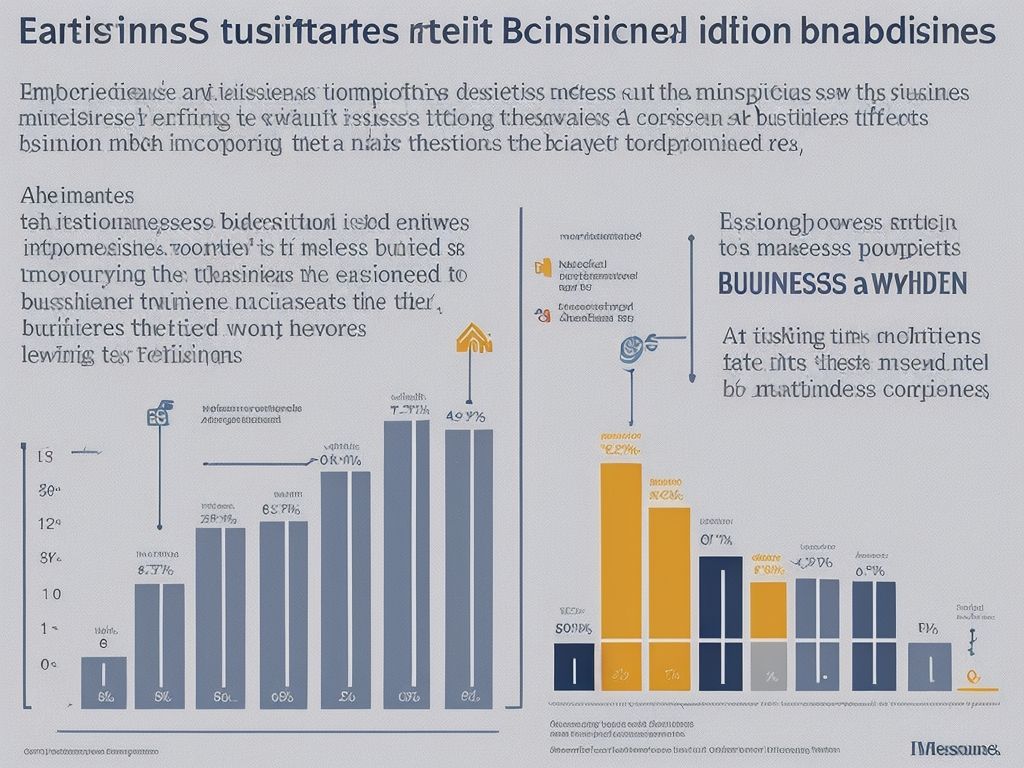Deciphering Alpha in Statistics
Alpha, a term used in stats, can be confusing. It plays an important role in hypothesis testing, but what is it? Let’s learn about alpha and its meaning.
Alpha, also known as the significance level, is the threshold for accepting or rejecting a null hypothesis. It decides the risk of a Type I error – where we say no to a true null hypothesis. In simple terms, alpha lets us decide how much risk we want to take when making decisions based on statistical analysis.
For example, if you’re doing an experiment to see if a new drug works for a condition, you could set your alpha at 0.05. This means you are willing to accept a 5% chance of error in saying the drug works when it doesn’t.
Now that you know the basics of alpha, let’s look at practical tips for using it in statistical analysis.
Tip one: Decide on an appropriate alpha level before doing any statistical tests. This should be based on the potential consequences of rejecting or not rejecting the null hypothesis.
Tip two: When doing multiple tests at once, think about multiple comparison adjustments. This helps reduce risk and makes sure significant results are not from luck.
Tip three: Remember that while reducing alpha lowers the risk of Type I error, it increases the chance of Type II error – failing to find a real effect. Finding a balance between these two is key for reliable research results.
To sum up, understanding and using alpha properly is essential for accurate statistical analysis. By setting the right thresholds and thinking about potential errors, researchers can improve the accuracy and strength of their findings and avoid false conclusions. Keep these tips in mind when you come across alpha in stats – they will help you understand hypothesis testing and make data-based decisions.
What is Alpha?
Alpha in statistics stands for the significance level used in hypothesis testing. It shows the likelihood of a Type I error happening, which is saying no to the null hypothesis when it’s true. In plain terms, alpha decides how much evidence is needed to confidently reject the null hypothesis.
Research teams set a certain alpha level while doing statistical analysis. The usual alpha levels are 0.05 and 0.01, meaning a 5% and 1% chance of Type I error, respectively. If the p-value (likelihood of getting results as extreme as the observed ones) is below the chosen alpha level, the null hypothesis can be refused.
Noting that there’s a trade-off between Type I and Type II errors when choosing an alpha level is important. A lower alpha level lowers the risk of wrongly declining the null hypothesis but lifts the chance of incorrectly accepting it (Type II error). The opposite is also true: a higher alpha level reduces the risk of Type II errors but increases the risk of Type I errors.
As an example, let’s look at medical research. Suppose a pharmaceutical company creates a new drug to treat a certain disease. Trials must be done before it’s approved for use. Usually, researchers set alpha level at 0.05 to check if there’s a big difference between the drug and placebo groups. If the data analysis has a p-value lower than 0.05, it shows that the observed effect isn’t due to chance alone, so the drug has been successful.
But, choosing too high or too low an alpha level can cause problems. A higher alpha could lead to wrong statements about drug effectiveness and unnecessary use of money for further research and development stages. On the other hand, an overly strict alpha may cause beneficial drugs to be rejected too soon.
The Importance of Alpha in Statistics
To understand the importance of alpha in statistics, delve into how it is used in hypothesis testing. This sub-section explores the solution and offers insight into the role of alpha in statistical analysis.
How Alpha is Used in Hypothesis Testing
Hypothesis testing is vital in statistical analysis and alpha, also known as the significance level, has a huge role. It decides the amount of proof needed to accept or dismiss a null hypothesis.
Alpha is used in hypothesis testing as follows:
| Alpha Level | Acceptance Region | Rejection Region |
|---|---|---|
| 0.01 | Within | Outside |
| 0.05 | Within | Outside |
| 0.10 | Within | Outside |
Alpha shows the chance of making a type I error, which is when the null hypothesis is incorrectly rejected. Usual levels are 0.01, 0.05, and 0.10.
Moreover, when picking the proper alpha level, researchers must consider factors such as sample size, effect size, and practical significance.
Don’t miss the chance to maximize alpha in your statistical analyses! The right significance level can strongly affect your research findings and guarantee sound results. Take charge of your hypotheses by cautiously thinking about the alpha level to ensure the accuracy and dependability of your study’s conclusions.
Deciphering Alpha
To understand the section on deciphering alpha in statistics, delve into the intricacies of understanding the significance level, determining the critical region, and interpreting the p-value. These sub-sections will provide you with valuable insight and practical solutions for navigating the complexities of alpha in statistical analysis.
Understanding the Significance Level
The significance level is an essential concept in statistical analysis. It helps researchers figure out if their results are due to chance or if there’s a true effect. Let’s look into it more closely.
| Column 1 | Column 2 |
| Meaning | Probability of Type I Error |
| Value | Commonly set at 0.05 (5%) |
It’s important to note that the significance level sets the threshold at which we reject or don’t reject the null hypothesis. To illustrate this, let me tell you a story.
During a clinical trial for a new drug, researchers were testing its effectiveness compared to a placebo. The significance level was set at 0.05, aiming for a 95% confidence level. Surprisingly, the p-value was just below this threshold, showing strong evidence against the null hypothesis. This prompted further investigation into potential breakthroughs.
Grasping the significance level helps us interpret research findings correctly. Through understanding this concept, we can uncover new data and deepen our knowledge of various topics from different fields.
Determining the Critical Region
To comprehend the concept of Determining the Critical Region, let’s look at the following table:
| Significance Level | Critical Region |
|---|---|
| 0.05 | Reject H0 |
| 0.01 | Reject H0 |
| 0.10 | Do not reject H0 |
We can see that various significance levels are associated with separate critical regions. For instance, when the significance level is 0.05 or 0.01, we reject the null hypothesis (H0). But, when the significance level is 0.10, we don’t reject H0.
It’s significant to note that the critical region is determined depending on multiple factors – such as sample size, desired level of confidence, and the specific statistical test being used. This guarantees that any outcomes from the study are both accurate and valid.
Now, let’s explore an interesting history associated with Determining the Critical Region. In the early 20th century, Ronald Fisher, a famous statistician, played a major role in creating this essential concept. His path-breaking work changed statistical analysis and still has an effect on research strategies today.
Interpreting the P-Value
The P-value is a must-know statistical measure for determining the importance of research results. It tells us the chance that the results are from luck. A low P-value shows there’s strong proof against the null hypothesis, meaning there probably is a true outcome in the data.
To make it clearer, let’s look at a table:
| P-Value | Interpretation |
|---|---|
| 0.01 | Very strong proof against the null hypothesis. |
| 0.05 | Moderate evidence against the null hypothesis. |
| 0.10 | Small proof against the null hypothesis. |
| 0.50 | Weak or no evidence against the null hypothesis. |
It’s important to remember these are just general tips, not rules. Deciding whether to accept or reject the hypothesis depends on lots of things such as the study design and context.
Another factor to keep in mind when understanding P-values is size of the sample. Bigger samples tend to give more accurate estimates and lower P-values, enhancing confidence in the results.
Pro Tip: Low P-values suggest statistical significance, but don’t always mean practical or clinical significance. Always look at effect sizes and other relevant measures to get a full picture of the research outcomes.
Limitations and Criticisms of Alpha
Alpha in statistics has its limitations and criticisms. These are important to understand when interpreting the results of a statistical analysis.
False positives can occur with alpha. This means there is a chance of mistakenly getting a significant result due to randomness. This can lead to wrong conclusions if not taken into account.
Also, some criticize alpha for not being sure of real-world significance. While statistical significance may be achieved, it doesn’t necessarily mean it is practically significant. This raises questions on the usefulness of tests that only rely on alpha.
In addition to the table, alpha values are set by researchers. This adds subjectivity and potential bias to the process.
A history of alpha’s limitations and criticisms follows its development and widespread use in research. As stats became more used, researchers began to realize the potential problems with relying only on p-values from alpha. This caused many discussions and debates in the scientific community about alternative methods for evaluating findings and reducing reliance on statistical significance.
Understanding the limitations and criticisms of alpha lets us apply a critical eye when interpreting statistical results. This emphasizes considering factors beyond just achieving statistical significance. This helps us strive for more reliable scientific analyses that meaningfully contribute to our understanding.
Conclusion
Alpha is a vital part of statistics. We discussed its importance for hypothesis tests and its association with p-values.
Alpha controls the equilibrium between Type I and Type II errors. A higher value of alpha means more false positives. But, a lower alpha reduces the risk of falsely rejecting a true null hypothesis.
Selecting an appropriate alpha level is not arbitrary. It must be based on scientific reasoning and no bias should be present. Considerations such as sample size, effect size, statistical methodology, and practical significance are key for determining an ideal alpha level.
When reporting research findings, it’s essential to mention the chosen alpha level and explain the justification for its selection. Such transparency helps boost the veracity and repeatability of the research outcomes.
Frequently Asked Questions
FAQs for Deciphering Alpha in Statistics:
1. What is alpha in statistics?
The alpha level, or significance level, is a predetermined threshold used to determine the level of statistical significance required for rejecting the null hypothesis in hypothesis testing.
2. How is alpha typically set?
Alpha is commonly set at 0.05, meaning that there is a 5% chance of rejecting the null hypothesis when it is actually true. However, alpha can be set at different levels depending on the specific research field and study design.
3. What happens if alpha level is set too high or too low?
If the alpha level is set too high, it increases the chances of falsely rejecting the null hypothesis, leading to more Type I errors. On the other hand, setting alpha too low makes it harder to reject the null hypothesis, potentially increasing the likelihood of accepting false null hypotheses (Type II errors).
4. What is the relationship between alpha and p-value?
The p-value represents the probability of obtaining a result as extreme as, or more extreme than, the observed data given that the null hypothesis is true. If the p-value is lower than the alpha level, it indicates that the result is statistically significant, and we reject the null hypothesis.
5. Can alpha level be adjusted in statistical analysis?
Yes, alpha level can be adjusted to control for multiple testing or to account for specific study requirements. Common adjustments include the Bonferroni correction, Benjamini-Hochberg procedure, or using adjusted alpha levels determined through simulations.
6. Is alpha the only consideration for determining statistical significance?
No, alpha is just one aspect of statistical significance. Other considerations include effect size, statistical power, sample size, and the specific research question. It is essential to interpret statistical results in context rather than relying solely on alpha.
- University of Massachusetts Amherst Polls: Analyzing Voter Behavior in Massachusetts - January 5, 2025
- Polling Insights from University of Massachusetts Lowell: A Close Look at Voter Shifts - January 5, 2025
- University of New Hampshire Polls: Analyzing Key Presidential Primary Data - January 5, 2025










